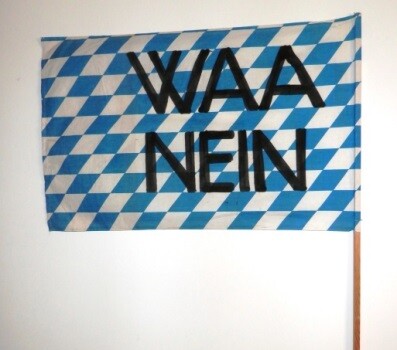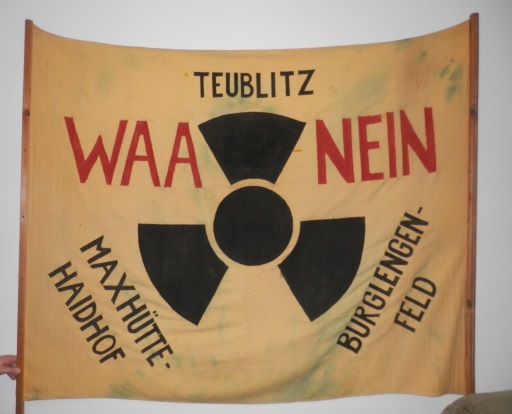A Life against the Nuclear Reprocessing Plant
A fight that lasted years ended for Wolfgang Nowak and his comrades when construction on the nuclear reprocessing plant in Wackersdorf was halted at the end of May 1989. They had been coming to the construction site of the nuclear reprocessing plant in Taxöldern Forest again and again and protesting the project since the start of construction in late 1985.
Born on May 21, 1950, Wolfgang Nowak completed a vocational internship in industrial management. He worked for the Federal Border Police for eight years, then earned a degree in business administration, and later switched to the public sector as a bookkeeper.
Nowak started protesting nuclear power plants in the late 1970s. When plans to build the nuclear reprocessing plant in Wackersdorf in the Upper Palatinate became known in the early 1980s, he established the Schwandorf citizen action group against the plant’s construction together with others. The Schwandorf citizen action group became a central resource center for the opposition movement against the nuclear reprocessing plant in the following years. Nowak describes the first demonstration in his life as a significant and utterly new experience: He had not had any experience approaching people and making public appearances. He had previously only been publicly active at the annual Corpus Christi procession. Nowak came from the Christian middle class milieu. His fight against the nuclear reprocessing plant primarily grew out of his “love for his home”, as he stresses. Making clear that “the police were not our adversary” was important to former border police officer Nowak. Many police officers who had to protect the temporary fencing around the nuclear reprocessing plant from demonstrators came from the surrounding area. There were close ties and even friendships between both sides.
Wolfgang Nowak remained active even after construction had been halted in 1989: The long years of protest produced a global network with other anti-nuclear activists, including in Gorleben in Lower Saxony. He still keeps contact with people as far away as Tokyo.
Wolfgang Nowak is something like the “memory” of the protests against the nuclear reprocessing plant: He collected documents, photos and objects from the protest actions and maintains contact with the former members of the Schwandorf citizen action group. Wolfgang Nowak donated some objects such as the pictured flags to the Haus der Bayerischen Geschichte in 2014.
Sources/Literature: Eyewitness interview by the Haus der Bayerischen Geschichte


